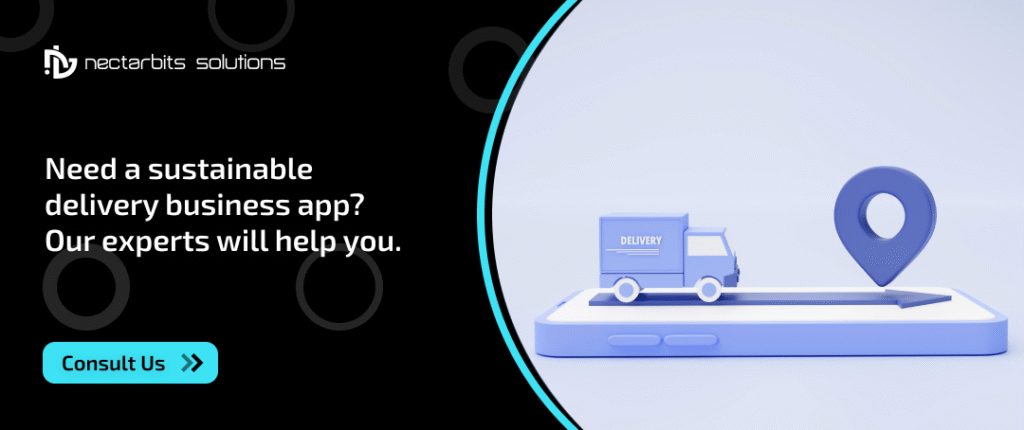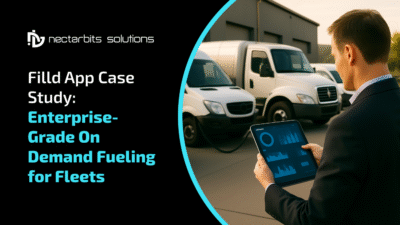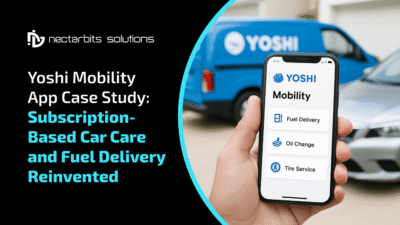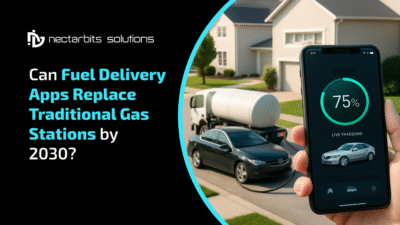Quick summary: As green thinking is taking centre stage, delivery businesses are looking for a clean and straightforward approach amidst rising operational costs, technological issues, customer dissatisfaction cases, and a lack of proactive monitoring. This blog will discuss 10 delivery business challenges and their solutions to deliver better services. Dig deeper to fix the issues off the bat.
Technological innovations enabled the convenience of doorstep delivery anytime, anywhere. The minimal expectation of online delivery is accompanied by speed, reliability, and experience. When same-day delivery services or one-hour delivery services stand up to expectations, it speaks a ton about the brand that even marketing fails to do so.
It means the success of the delivery business starts from the cart and ends with delivery. However, there are a lot of last-mile delivery problems that won’t allow delivery businesses to succeed. Mastering the art of delivery like Amazon is a way to win customers’ hearts and turn them into loyal customers.
The practical solutions to overcome operational challenges, technological challenges, customer experience challenges, and financial and scalability challenges help optimise the delivery business. Here, we have explained the key pain points and their solutions extensively, which empower delivery businesses and keep them moving forward.
Top 10 delivery business pain points and their solution
The next big thing in the delivery business is sustainability, and businesses can achieve this goal only when last-mile delivery problems are fixed aptly. Here, we will discuss the delivery business challenges and their solutions that will never let your deliveries be stopped or delayed.
High fuel and maintenance costs
Fuel expenses and maintenance costs are the most significant operational costs for delivery businesses, which impact the profit margin by 20%. Poor vehicle maintenance leads to downtime due to unexpected breakdowns and vehicle wear and tear.
Solution
- Transitioning to fuel-efficient vehicles like EVs or hybrid vehicles reduces fuel consumption and requires lower maintenance, which costs 50-70% less per mile.
- The Canadian government’s EV subsidies and tax credits help financially, and fuel cards offer discounts.
- Preventive vehicle maintenance implementation auto-schedules maintenance, and IoT sensors monitor engine health and send alerts in real time.
- Vehicle lifespan increased by 50%, and unfortunately, repair costs were reduced by 40%.
- Improved visibility into fuel spending with fuel tracking software cut fuel expenses by 10%.
Driver shortage and high turnover
Delivery businesses are facing a shortage of reliable drivers and increasing turnover rates due to long hours and burnout, low pay, poor working conditions, and regulatory stress. The understaffing leads to delayed deliveries, service inconsistency, poor customer satisfaction, and increased hiring costs.
Solutions
- Competitive pay scales and bonuses reduce turnover.
- Flexible shifts and 1-2 days off per week improve work-life balance and boost driver satisfaction.
- Well-maintained vehicle conditions make working conditions better, and that makes drivers stay with the business.
- Tiered driver roles and promotions within the business provide growth plans that reduce quit rates.
- Recognition and rewards motivate the drivers.
Poor route optimisation
Manual route planning with real-time traffic data and unoptimized order grouping leads to delayed deliveries, increased fuel costs, and wasted labour hours. The ineffective scalability lowers the customer satisfaction as well, which can be optimised using technological solutions.
Solution
- AI-enabled route optimisation ensures the fastest and most efficient route.
- Real-time traffic and GPS tracking integration adjusts the route dynamically.
- Cluster-based delivery scheduling by zip code enables organised deliveries
- Time-window prioritization enables timely delivery
Failed deliveries and returns
The wrong or incomplete address, customer unavailability at the delivery location, and delivery outside expected time windows lead to failed delivery. Incorrect product delivery or damaged product delivery increases returns.
Solution
- Address validation and verification at the checkout using Google Maps API, SmartyStreets, and Loqate tools.
- Pre-delivery notification increases first-attempt delivery success.
- Flexible delivery time windows and slot selection facility reduce refusals.
- Enable 2nd or 3rd delivery attempt with auto-reattempt rules
- Return management system to streamline reverse logistics
Warehouse and inventory issues
Inaccurate inventory data, stockouts or overstocking, no visibility into inventory, disorganised warehouse layout, and misplaced items within the warehouse lead to delayed deliveries, increased storage costs, and wasted labour hours. Scaling the operations is very difficult.
Solution
- Warehouse management system implementation automates stock tracking and replenishes inventory.
- Real-time inventory visibility avoids over-scaling
- Use barcode scanning or RFID technology to improve accuracy during picking, packing, and shipping.
- Optimise warehouse layout to maximise storage capacity
- Demand forecasting with data analytics prevents overstocking
- Batch and expiry tracking reduces waste and isolates bad batches.
Outdated dispatch system
When delivery task assignments and goods movement are managed manually with a tracking facility available, human errors lead to wrong dispatch or delayed dispatch, which further increases delivery times. It increases drivers’ idle time and ruins their productivity.
Solution
- Automate task assignment to drivers based on proximity, vehicle capacity, and load
- Monitor driver location with real-time GPS tracking of the vehicle
- Provide a dispatcher dashboard to offer complete visibility into task dispatch
- Dynamic load balancing to spread delivery loads without partiality
Lack of real-time tracking
When the real-time track facility is absent or unavailable, dispatchers cannot track drivers, and customers are left in the dark (Repetitively call customer support), which increases failed deliveries and increases customer support workload.
Solution
- Implement a GPS-enabled app to track the driver’s location in real-time and get live updated status.
- Customer-facing live tracking status reduces customer anxiety and support calls.
- Auto-status updates with geofencing that keep customers informed
- Continuous delivery notification via SMS, in-app message, or email.
Technological and software issues
The delivery business app often experiences app crashes or poor performance that frustrate users and prevent them from trying the app again. Advanced cybercrimes make fake orders and chargebacks that impact business revenue. Data security concerns that include hacks or manipulation of customer data are disastrous for the business.
Solution
- Conduct regular load testing and cloud hosting optimisation to ensure the best performance.
- Using advanced tools for fraud detection and OTP verification for high-value orders minimises the impact.
- Data encryption and compliance with regulations eliminate the chances of cyberattacks.
Customer experience problems
Customers never negotiate for late deliveries, and that leads to refunds. Also, when there’s no notification for delayed deliveries and a rescheduling facility is available, customer retention gets lower. There’s no space for damaged products or poor packaging, leading to returns.
Solution
- Setting realistic delivery windows prevents late deliveries, and discounts or loyalty points for late deliveries are excellent compensation.
- Proactive alerts for delayed delivery and an AI chatbot for instant support ensure the best experience.
- Proper packaging from trained staff and insurance coverage ensures good packaging and reduces returns.
- Self-service scheduling and rescheduling through the app make delivery flexible.
Financial and scalability challenges
High customer acquisition costs, cash flow problems, quick expansion, and compliance issues make it difficult for delivery businesses to survive. Trying to play catch-up with big players like Amazon, Uber, etc., that are already dominating the market is not worth it. The following solutions help with the delivery business cost reduction.
Solution
- Using Google or Local SEO and focusing on referral programs helps increase conversion with low investment.
- A prepaid subscription is a good approach to managing late payments from customers.
- Starting a delivery business in one city and then gradually expanding with a cloud-based system is good.
- Consulting logistics compliance experts and employing logistics cost-saving strategies helps avoid fines.
- Offering hyper-local personalisation in a niche market is a way to grow and get bigger.
How does Nectarbits help to make the delivery business stronger?
With growing customers’ expectations for last-mile delivery, delivery businesses are turning to technological innovations to fix the challenges and make deliveries better. Also, it helps sustain customer loyalty, conversion, and ROI. Nectarbits is a leading mobile app development company in Canada that has helped delivery businesses manage delivery fleet costs, cut delivery operation expenses, and achieve fuel efficiency for courier services with flawless delivery business system development.
Our experts have assisted delivery businesses in streamlining inventory management, fleet management, fuel expense management, dispatch management, customer experience management, technological solution development, and much more. With a variety of modules, we allow delivery businesses to address all the last-mile delivery problems and stand up to the customers’ expectations.
Conclusion
Amidst the variety of challenges, delivery businesses can survive and thrive when they can identify the pain points and fix them proactively. The innovative changes, aka solutions, prepare delivery businesses and customers for a stronger tomorrow. Partner with a reliable delivery app development company to build a flawless delivery app that keeps customers satisfied and happy and lets businesses grow hassle-free.

FAQ
1) How can I eliminate failed deliveries?
Prompting a message in the delivery app during checkout helps validate and verify address details. Also, automated notifications for ETA and delivery status ensure customers remain available at the location.
2) How can I lower delivery expenses?
The rising fuel cost, inefficient routing, and vehicle maintenance increase delivery expenses, which can be reduced with route optimisation, proactive vehicle monitoring, optimising delivery zones, and using EVs.
3) How can I scale delivery operations efficiently?
The delivery business app is scalable and allows businesses to meet the growing delivery requests by automatically dispatching the delivery request to the available nearest drivers, balancing the load, and getting them delivered on time.
4) How can I reduce vehicle downtime?
Proactive maintenance scheduling and continuous monitoring of the vehicle’s health and usage help avoid vehicle breakdown that further halts the delivery process.
5) Why do inventory errors impact online deliveries?
The inaccurate stock levels lead to order cancellations or missed deliveries, which dissatisfy the customers and retaining them becomes difficult.




